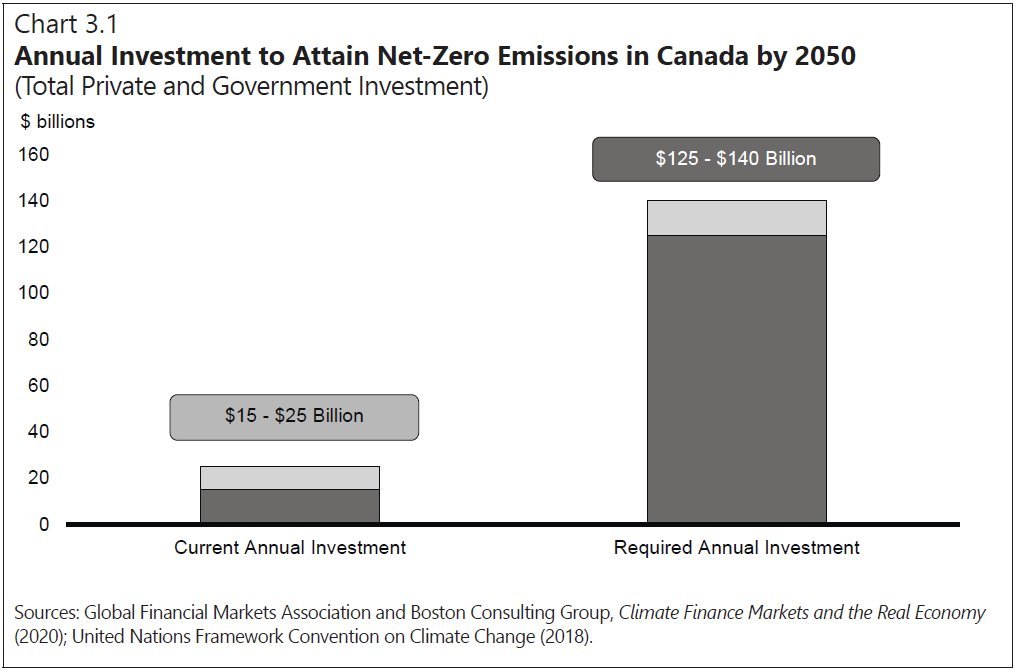Canada versus the IPCC: Do nothing by halves which can be done by quarters
[This piece was originally published in Canada’s National Observer here.]
He skilfully avoided what was wrong
Without saying what was right,
And never let his on the one hand
Know what his on the other hand was doing …
Postpone, postpone, abstain …
Truly he will be remembered
Wherever men honour ingenuity,
Ambiguity, inactivity, and political longevity.
Let us raise up a temple
To the cult of mediocrity,
Do nothing by halves
Which can be done by quarters.
- F. R. Scott from a poem written to mark the death of Prime Minister Mackenzie King
I am a political optimist by nature. I keep wanting to believe our federal government has turned a corner — that it has seen the light on the climate emergency and is ready to shift into high gear.
But reality keeps bursting my bubble.
The poem excerpted above by Canadian poet Frank Scott (who was also a constitutional scholar and co-founder of both the CCF and NDP), gives Mackenzie King, Canada’s longest serving prime minister, too little credit for his wartime performance. But with that exception, it brilliantly captures the essence of the Liberal party for decades. And those last two lines not only speak to the spirit of our government’s current approach to the climate crisis, they may prove to hit with uncanny accuracy the mathematical mark with respect to our greenhouse gas reduction targets.
Should such quarter measures be lauded for at least getting us on the right path, for achieving what seems possible in the present? Pundits and government validators who see matters through the “realistic” lens of politics are inclined to do so. The problem with this view is the climate does not give a damn about the art of the politically possible; it is governed by the laws of nature, and there is no bargaining to be had with those laws.
For those of us who follow the climate file closely, the last few weeks have been rough, marked by one step forward two steps back, and by the release of pivotal reports that provide a study in contrasts and contradictions.
The incoherence of Canada’s Emissions Reduction Plan
In late March, the Trudeau government released its 2030 Emissions Reduction Plan (ERP), its updated plan to reduce Canada’s GHGs 40 per cent by 2030. After 20 years of Canada’s GHG emissions plateauing at a historic high, this federal plan will likely see our emissions curve finally bend and begin a long-awaited downward trend. That’s the good news. But the slope of that downward trajectory will not align with what the climate science demands of us — at least a 60 per cent reduction by decade’s end. And according to the latest report from the federal environment commissioner, it is unlikely to even attain the inadequate 40 per cent reduction target it purports to hit by 2030.
While the ERP is the most detailed climate plan we’ve seen from the federal government and the language is strong (a signal that the terrain is shifting in a positive direction), it lacks ambition. The plan contains $9 billion in new climate spending, although this is to be spread over seven years. Too many of the target dates in the plan are back-end loaded to the post-2025 period, leaving them politically vulnerable. Tellingly, the ERP was unveiled at Globe in Vancouver, an annual business and environment conference whose sponsors include fossil fuel corporations and financial enablers Shell, Suncor, FortisBC, Enbridge and RBC. Most troubling, the new federal plan also projects that Canadian oil production will continue to increase by 22 per cent — or 910,000 barrels per day — over this decade.
Then, in early April, we saw the release of the latest Intergovernmental Panel on Climate Change (IPCC) report, urging the world to undertake immediate and deep cuts to GHG emissions before the goal of keeping global temperature rise below 1.5 C slips out of reach. Speaking in response to the IPCC release, UN secretary-general António Guterres condemned high-emitting governments and corporations for “adding fuel to the flames.” In a speech where he appeared to lose patience, Guterres declared, “Climate activists are sometimes depicted as dangerous radicals. But the truly dangerous radicals are the countries that are increasing the production of fossil fuels.
“Investing in new fossil fuels infrastructure is moral and economic madness,” proclaimed the world’s top diplomat. And using decidedly undiplomatic language, he continued, “Some government and business leaders are saying one thing — but doing another. Simply put, they are lying.”
Canada, he’s looking at us.
Bay du Nord: What emergency?
But Guterres’s message clearly failed to penetrate the federal cabinet. Two days later, when faced with its first major post-ERP test, in a move more dissonant than many could fathom, the Trudeau government gave approval to the Bay du Nord deep-water oil extraction project off Newfoundland. If Equinor, the Norwegian company behind the proposal, chooses to proceed (a final investment decision is expected in the next year), the project could produce a billion barrels of oil over its lifetime, or an annual amount equivalent to adding seven million gas cars to the road.
At this late hour in the climate emergency, with the International Energy Agency and IPCC telling us our global carbon budget cannot abide any new fossil fuel projects, our government’s Bay du Nord decision amounts to an act of arson.
Proponents claim the project is “low-carbon” and will be “net-zero” by 2050. Don’t be fooled. This dubious claim relates only to emissions at the point of extraction. In reality, the majority of GHG emissions (over 80 per cent) are generated at the point when that oil is burned. Those combustion emissions (what’s technically known as “Scope 3” emissions) are what matters to the climate.
Part of what makes the Bay du Nord decision so enraging is that it communicates the opposite of emergency. When governments send contradictory messages by approving new fossil fuel projects, they are effectively telling the public the emergency isn't real. But it is, with the current heat wave in India and Pakistan just the most recent devastating reminder.
As with the federal government’s stubborn commitment to continue with the Trans Mountain pipeline expansion, the greenlighting of Bay du Nord is additionally frustrating because there is no disputing these projects are squarely positioned under federal jurisdiction. Even when they are fully empowered to make the right call, this federal government is choosing to make the wrong one.
Now the climate movement will have to waste precious time and energy fighting a rear-guard action to defeat this obscene project and prevent its future emissions. Frustrating but necessary because this project can and must be stopped.
Follow the money
The final break with our faith came the next day with the release of the 2022 federal budget.
Given the government’s tendency to make big multi-year climate announcements, it can be challenging to calculate how much is being spent in a single given year. Thankfully, Canadian Centre for Policy Alternatives economists Hadrian Mertins-Kirkwood and Marc Lee have helpfully annualized all these budget commitments. Budget 2022 saw about $1 billion in new climate mitigation spending for the current fiscal year (funding the implementation of new measures outlined in the ERP the previous week). According to Mertins-Kirkwood and Lee, when this spending is combined with the ongoing rollout of previously announced spending from earlier budgets, annual federal spending on climate mitigation amounts to about $2.9 billion this year, and will rise to just over $4 billion in each of the following two years. If one takes a more expansive view that includes spending on green infrastructure, climate adaptation and industrial subsidies, the amount spent this fiscal year may reach as high as $12 billion.
As Mertins-Kirkwood and Lee note, that may sound like a lot of money, “but it only accounts for 2.8 per cent of total federal spending and just 0.4 per cent of GDP this year. Given the scale and urgency of the climate crisis, it’s not nearly enough. Climate economist Nicholas Stern has proposed governments spend two per cent of GDP on climate-related investments. For Canada, that would be about $56 billion this year.” The Trudeau government isn’t merely spending a little less than it should, it is off by at least a four-fold magnitude.
The most underdeveloped elements of both the ERP and the budget are with respect to “just transition,” a point reinforced by the latest report from the federal environment commissioner who has rebuked the government for its failure to deliver on this promise. The money in the budget designated for this purpose amounts to a rounding error. Yet in the absence of a robust and compelling just transition plan for fossil fuel workers and the communities that rely on those jobs, the government feels trapped into making odious decisions like the Bay du Nord approval.
Most revealing, the largest single “climate” spending measure in Budget 2022, clocking in at $2.6 billion over the next five years and $1.5 billion annually after that, is the new tax credit for carbon capture and storage (CCS), the bulk of which will go to oil and gas companies even as they rake in record profits ($34 billion in 2021). This represents a huge and brand-new fossil fuel subsidy from a government purportedly committed to ending such subsidies.
The CCS tax credit lays bare the government’s strategy. When the Liberals broke new ground in the last election by promising an oil and gas emissions cap, the intention was never to actually curtail fossil fuel production, but rather, to focus solely on dubious efforts to lower extraction and production emissions by means of offsets and CCS — while lavishing public dollars on some of the richest companies on Earth to assist them in extending their production activities.
In this illuminating chart contained in Budget 2022, the finance ministry shared the gap between current and needed annual spending (or “investment”) to attain “net-zero emissions in Canada.” The lighter bars show government spending, while the darker ones show private spending, both current and aspirational. What is clear is that the government does not intend to spend what it takes to confront the climate crisis; rather, it hopes to leverage and entice the private sector to do so. The Liberals seek to incentivize our way to victory. Both the ERP and the budget explicitly make clear that the federal government’s flagship climate policy remains the escalating carbon price, a market signal it hopes will cajole private investment in the right direction. This is an approach that will see us fry. It is no way to prosecute a battle for our lives.
The uncomfortable conclusion is this: Canada’s approach to climate is a hot mess of incoherence and contradictions, and it is fundamentally at odds with what the IPCC demands of us. As Canada’s National Observer columnist Barry Saxifrage has documented, Canada’s record is that of a rogue super-emitter. Our country now has an updated emissions plan that will finally start to see our GHGs decline. But the pace and pitch are all wrong. Canada still needs a real climate emergency plan.
Given that the government does not have the matter in hand, that means those of us who understand the emergency still need to mobilize. If these disappointments have you down, know that hope comes in the doing — action and organizing are the antidotes to despair.
______
My thanks to professor Marjorie Griffin Cohen for directing me to this poem by F.R. Scott, from which she also drew recent inspiration in her analysis of the health-care provisions in the latest federal budget.

